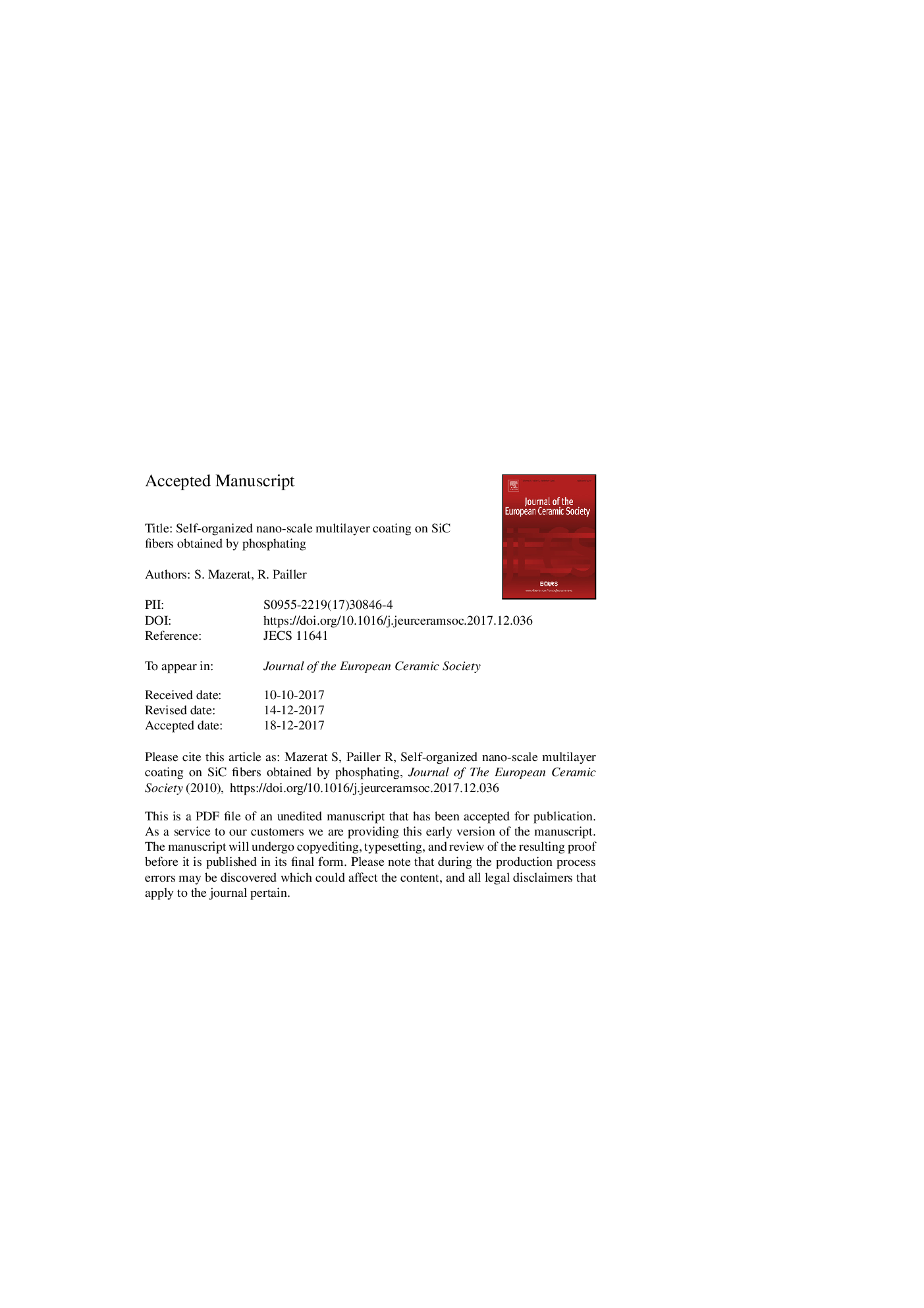| Article ID | Journal | Published Year | Pages | File Type |
|---|---|---|---|---|
| 7898324 | Journal of the European Ceramic Society | 2018 | 33 Pages |
Abstract
Ceramic matrix composites (CMC) combine refractory and structural properties, with a damage-tolerant behavior ensured by an interphase material, usually deposited on fibers. Unfortunately, surface deposition does not prevent contacts between fibers, which are responsible for the premature collective failure of fiber clusters and therefore for limited lifetime. Recently, a workaround has been proposed by transforming the surface of the fibers itself into a continuous monolayer coating. Here we describe an SiC fiber etching process by phosphoric acid vapors at atmospheric pressure and intermediate temperature (600-700â¯Â°C), leading to an in situ multilayer transformation into a (carbon/silicophosphate)n coating, n ranging from unity to tens and layers thickness from 100 to 300â¯nm. The carbon layers are micro/mesoporous carbide-derived carbon (CDC) tubes with micrometric radii. This one-step etching process gives opportunity to create layered materials containing CDC even on complex geometries such as fabrics.
Related Topics
Physical Sciences and Engineering
Materials Science
Ceramics and Composites
Authors
S. Mazerat, R. Pailler,
